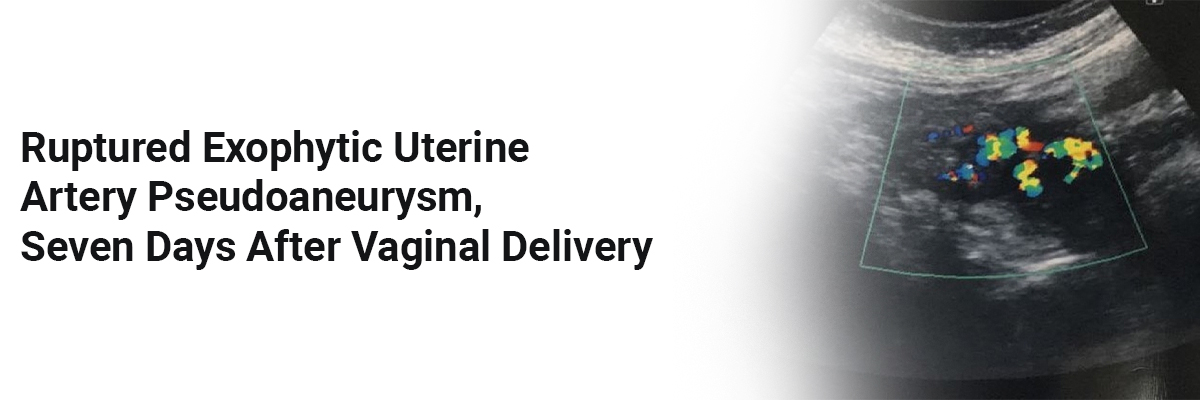
 IJCP Editorial Team
IJCP Editorial Team
Ruptured Exophytic Uterine Artery Pseudoaneurysm, Seven Days after Vaginal Delivery
A 31-year-old woman was hospitalized due to an excruciating abdominal
pain eight days after a vaginal delivery.
The lady had no history of vascular issues or relevant medical
background. She had had a normal pregnancy and delivered vaginally at 39 weeks
and 2 days gestation. Labor augmentation involved oxytocin and uterine fundal
pressure due to stalled labor, lasting 11 hours and 20 minutes for the first
stage and 48 minutes for the second, with a total blood loss of 200 mL. The
infant weighed 3,710 g and had an Apgar score of 1 at one minute and 5 at five
minutes, with an umbilical artery pH of 7.08.
The initial discharge was uneventful, but on the seventh postpartum day,
the mother developed persistent abdominal pain and fever. She was prescribed
antibiotics before being transferred to the tertiary perinatal center due to
unresolved symptoms.
On examination, the patient presented with stable vital signs and
negative vaginal and blood cultures. Laboratory findings showed a white blood
cell count of 11.7x103/μL, CRP level of 14.8 mg/dL, and hemoglobin level of 9.4
g/dL.
Transvaginal ultrasound identified an 8 cm hematoma housing a 17.6x16.7
mm hypoechoic mass near the left cervicocorporeal junction – suggestive of an
exophytic uterine artery pseudoaneurysm (UAP) with hemoperitoneum. A
contrast-enhanced CT confirmed a pseudoaneurysm originating from the left uterine
artery alongside the hemoperitoneum.
Angiography revealed a pseudoaneurysm at the left uterine artery
bifurcation, which was managed through embolization using
n-butyl-2-cyanoacrylate (NBCA) and coils. This intervention resolved the
patient's pain.
Subsequent imaging revealed a thrombosed pseudoaneurysm, suggesting a
laceration on the left broad ligament. The lady was treated for possible
sepsis. She was discharged after 12 days.
Follow-up at eight months postpartum showed resolution of symptoms and absence of the UAP. This case underscores the importance of recognizing postpartum fever and abdominal pain in diagnosing ruptured exophytic UAPs – as prompt intervention can prevent complications.
Source: Toshimitsu M, Iriyama T, Sato J, Abe O, Ichinose M,
Sayama S, Seyama T, Sone K, Kumasawa K, Osuga Y. Case Reports Obst Gynec. 2023
Nov 25;2023.

IJCP Editorial Team
Comprising seasoned professionals and experts from the medical field, the IJCP editorial team is dedicated to delivering timely and accurate content and thriving to provide attention-grabbing information for the readers. What sets them apart are their diverse expertise, spanning academia, research, and clinical practice, and their dedication to upholding the highest standards of quality and integrity. With a wealth of experience and a commitment to excellence, the IJCP editorial team strives to provide valuable perspectives, the latest trends, and in-depth analyses across various medical domains, all in a way that keeps you interested and engaged.





















Please login to comment on this article